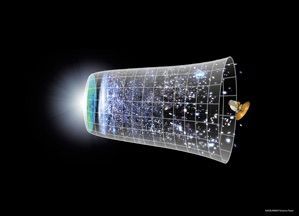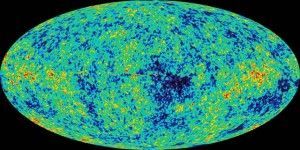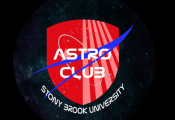By Joe Goncalves
Staff Writer
Friday night Stony Brook University held their second Astronomy Open Night of the Spring 2016 semester. It was hosted by Assistant Professor at the University Neelima Sehgal, who spoke at length about a topic that has gained a lot of attention from the media in recent weeks, which is the detection of gravitational waves from the early universe.

Neelima Sehgal has had an impressive past within the field, receiving her Bachelors from Yale University and her Ph.D from Rutgers University. She previously worked on a postdoctoral fellowship at Stanford and then Princeton Universities before her current Assistant Professor position at Stony Brook.
She is currently involved in research efforts in the Cosmic Microwave Background, Dark Energy, Dark Matter, and Neutrino Physics and the Early Universe. She is currently a member of the ACTPol Collaboration, of which Stony Brook University is a parter, and the Large Synoptic Survey Telescope, research efforts that are scanning the skies and looking at radiation left over from the Big Bang.
The approximately one hour long lecture covered the background of what gravitation waves are and why they’re important to the scientific community at large. It also chronicled the history of the Cosmic Microwave Background and its detection, and took a glimpse at the future of detection. Although the subject matter of the presentation was dense and complicated in many ways, Sehgal’s wonderful use of visuals in her presentation made it understandable for everyone in attendance.
The presentation was heavily related to the supposed time period of “Inflation” of space that many scientists believe took place in the fractions of a second after the Big Bang. The detection of gravitational waves is critical to understanding this period of inflation, and confirming its existence.

Professor Sehgal also spoke of the gravitational waves that were detected several months ago that were plastered on almost every major news outlet. She explained how these gravitation waves were somewhat different than the ones she is currently researching, because they came from the collision of two black holes taking place over 1.3 billion years ago, rather than from this inflationary period in the early universe. She also showed a video that helped make the concept much more down to Earth and understandable. The video displayed a computer monitor of the collision of the black holes, along with the signal that was received by the LIGO experiment, which was based in Washington and Louisiana.
The lecture was concluded with talks of the future prospects in the field of Cosmic Microwave Background detection. In particular she talked about the progress of technology in the field over the last several decades, such as the evolution from the COBE Satellite in 1994, the WMAP Satellite in 2003, and the Planck Satellite in 2013, which gives us the clearest images of the Cosmic Microwave Background to date. The last points of her lecture discussed the propositions made by many in the field to combine efforts to create significantly more sensitive instruments for detecting this radiation, called CMB-S4. This proposed machinery would nearly reach the theoretical limit for accurate detection, and could be a massive step forward in understand the early stages of the universe.
After the lecture was completed the Stony Brook Astronomy Club invited all who attended the lecture onto the roof, where telescopes were set up, to do some stargazing. The club had set up a smaller telescope aimed at Jupiter, with a clear view of the planet and its four Galilean moons, while the higher powered telescope in the dome was aimed at the Orion Nebula. Although most of those observing were quite cold, it was a wonderful opportunity to learn about these significant concepts of our universe, and see some beautiful sights at the same time. There is thanks to be given to Professor Sehgal for a compelling lecture and to the Stony Brook Astronomy Club for being accommodating as always.


